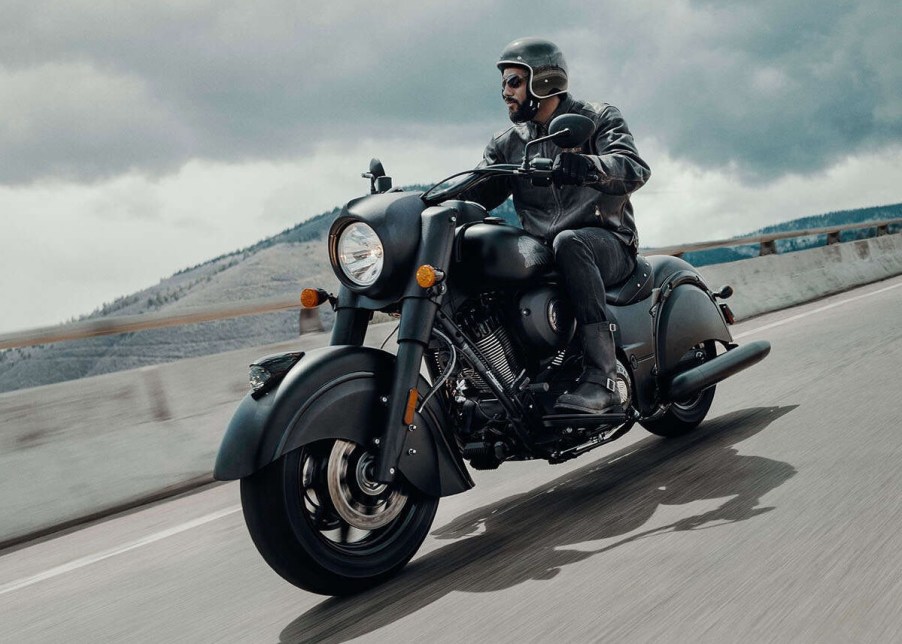
Is Indian Doing Better Than Harley-Davidson?
Just like Ford and Chevrolet compete in the car world, Indian and Harley-Davidson compete in the motorcycle world. But recently, Harley-Davidson has been going through something of an extended rough patch. Its CEO left amid what seems like boardroom drama, for one. And while Harley has some interesting bikes in development, its high-performance electric LiveWire wasn’t selling well even before COVID-19 hit. But, although Indian has developed some impressive machines of its own, is it doing any better?
Indian’s sales figures vs. Harley-Davidson

Indian’s parent company, Polaris Industries, released its Q1 2020 sales figures recently, RideApart reports. And while Polaris’ sales are understandably down, the motorcycle brand seems to be doing alright.
Overall, US motorcycle sales are down -10.6% in Q1 2020 compared to Q1 2019. Polaris’ sales across all its brands dropped 6% in the same period. However, Indian’s sales are actually up 7%. Harley-Davidson’s US sales, meanwhile, are down 15.5% in Q1 2020 compared to Q1 2019.

Numerically, however, Harley-Davidson is still out-selling Indian. Statista reports that, as of March 2020, Harley has a 30.6% share of the US market. Indian, meanwhile, is bundled in with the ‘other brands’, which collectively control only 15% of the market.
But does that mean Harley-Davidson’s actually doing better than Indian? Answering that requires a closer look at both brands.
Looking closer
The problem with analyzing Indian’s performance is that it’s a part of a larger group of brands. Thus, even if Indian does somewhat poorly, it has Polaris’ other powersports companies to absorb its loss. Harley-Davidson, meanwhile, is on its own.
In addition, Polaris includes sales of its 3-wheeled Slingshot with Indian’s sales. Because the Slingshot is legally considered a motorcycle in some states, this makes sense, but it adds further complications.

It is worth pointing out that, although The Motley Fool reports Indian’s 2019 sales did dip somewhat, the brand overall grew in 2019, RideApart reports. Likely, that’s thanks to new models like the Scout Bobber, FTR 1200, and the cheaper FTR 1200 Rally. Harley-Davidson has no direct rival for the flat-track inspired FTR 1200—at least, not yet.
However, The Motley Fool also muses that Indian could soon be facing a Harley problem of its own. The two brands compete heavily in the cruiser and bagger (aka ‘touring’) segments, with models like the Indian Challenger Dark Horse and Harley Road Glide. Although well-reviewed, these bikes are large, heavy, and expensive. They’re also, arguably, a bit too old-school.

That may seem odd to say, considering BMW’s R18 cruiser is about to hit dealerships. And it, too, is large, heavy, and expensive. The difference is that BMW has a more diverse lineup, and more entry-level bikes to choose from. Even if the R18 doesn’t work out, BMW can turn to its adventure and sports bike customers. In contrast, when Harley-Davidson tried to innovate with the V-Rod, a cruiser the company designed with Porsche, Harley’s clientele didn’t exactly flock to it.
To be fair, Indian is expanding past the cruiser segment. But can it do so fast enough, not just to catch up with Harley, but other companies?
Indian vs. other motorcycle brands

Right behind Harley-Davidson in US market share is Honda, Statista reports. As of March 2020, based on sales, it commands 21.4% of the market. And in India, the world’s largest motorcycle market, RideApart reports its sales actually grew 10% in Q1 2020 vs Q1 2019. In part, that’s likely due to Honda’s entry-level bikes, like the Grom and Super Cub.

Kawasaki and Yamaha also command more of the US market than Indian: 12.2% each. Plus, Kawasaki’s developing a manual-transmission electric motorcycle. The Harley LiveWire may be quick, but it’s automatic. And Indian doesn’t have an electric motorcycle at all.
So, while Indian’s sales may be growing compared to Harley-Davidson’s, it still has a ways to go.
Follow more updates from MotorBiscuit on our Facebook page.


